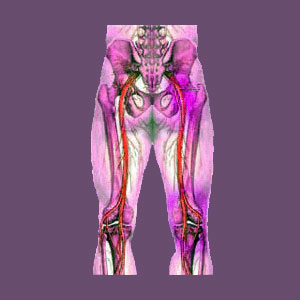
Learning and understanding the basic piriformis syndrome facts will help patients to enjoy better therapeutic outcomes. There remains much misinformation concerning piriformis syndrome in the popular knowledge base and unfortunately, some of these falsehoods are actually propagated by opportunistic care providers who are desperate to get their greedy little hands on your money. We find this behavior reprehensible and have worked diligently to protect healthcare consumers with our advocacy efforts for the past 15 years. This essay is an extension of this objective.
What constitutes a fact and can facts actually change? These are important point to consider when planning how to manage piriformis pain. Remember that medicine is, and has always been, a revisionist science. What is considered fact today was myth yesterday and will likely be proven to be false again tomorrow. Therefore, it is vital to understand the high level of subjectivity that is present in virtually all piriformis diagnostic and treatment processes.
This essay delves into piriformis muscle fact and fiction. We will clarify what we do know for sure, what we currently believe to be true and what common forms of misinformation remain in the popular view of piriformis syndrome.
Verified Piriformis Syndrome Facts
Ok, so let’s discuss some facts about the piriformis muscle that are indisputable:
The piriformis muscle is usually located in front of the sciatic nerve and does not compress it in any way in a typical anatomy. However, in some people (17%, actually), the sciatic nerve will be in an irregular position or configuration relative to the piriformis muscle. In these cases, the chances for compression of the nerve increase based on diagnostic statistics, but this does not necessarily mean that the irregularity is the actual reason for the compression.
The piriformis muscle is a very important tissue that is responsible for helping us to walk in an upright posture with seamless transference of weight from side to side. Without the piriformis muscle and the other tissues of the lateral rotator group, our human functionality would be very different.
The piriformis muscle can certainly act as a scapegoat for pain, since virtually all diagnoses of piriformis syndrome are speculative and based on educated guess, rather than objective evidence-based proof.
Piriformis syndrome is a very real diagnosis, but the causative process is misidentified in many patients and therefore creates treatment complications leading to disappointing therapeutic outcomes.
Speculative Piriformis Pain Facts
There are some “truths” that are widely accepted by doctors and laymen alike, yet these “facts” actually have no basis in scientific research evidence:
Most cases of piriformis syndrome are blamed on injury or tissue degeneration. There is almost never evidence of piriformis injury having taken place in most diagnosed patients. Furthermore, degeneration is considered a completely normal part of aging and would cause piriformis pain universally if it were pathological.
The piriformis muscle is often diagnosed as suffering from an imbalance. The natural design and antagonistic pairings of the lateral rotator group of muscles make this diagnosis possible, but highly improbable in virtually all cases.
Piriformis syndrome can be accurately diagnosed with certainty. This is the subject of much debate, since there is no definitive way to know for sure that the piriformis is the underlying cause of symptoms. We have seen many cases where “evidence” was used to implicate the piriformis, yet treatment failed miserably. Meanwhile, therapies which ignored treating the piriformis were successful in banishing pain. Therefore, we can conclude that much of this “evidence” is nothing more than coincidental structural change that might be a scapegoat in many patients, rather than a true origin of symptoms.
Piriformis Syndrome Facts and Fiction
Here are some “facts” that are actually completely untrue, based on objective evaluation of the preponderance of evidence existing in research and clinical medicine:
“Piriformis syndrome is a myth. It does not exist.” This idea is completely false. We have seen proof positive that the piriformis can and does compress the sciatic nerve in some patients. However, the reasons why this occurs are very subjective, as noted above.
Drug therapies are still considered one of the most effective forms of treatment for piriformis syndrome, especially by traditional physicians. Drugs demonstrate some of the worst results for treating piriformis syndrome and also subject the patient to incredibly real health hazards, especially when used over long timelines.
Alternative or complementary medicine is not effective for structural pain problems like piriformis syndrome. This is a complete fabrication. In fact, massage, acupuncture and self-managed exercise treatment are some of the most effective therapies. Botox is another very effectual temporary cure for piriformis compression of the sciatic nerve. The single most effective therapy based on cure rate of chronic piriformis pain is the use of the alternative medicine practice known as knowledge therapy. Just because a practice falls outside of typical use in the traditional medical field does not mean that it should be discounted. In fact, given the poor treatment statistics offered by traditional medicine for any chronic pain issue, we propose the exact opposite to be true…
Piriformis Pain > What is Piriformis Syndrome? > Piriformis Syndrome Facts





